Jessica and I had a Great Aunt, Mollie, who lived to be 102. When I asked her what had been the biggest change she’d witnessed in her lifetime, she answered: the breakdown of social ties. When she was growing up in the 30s, her family shared a St. Louis townhouse with aunts, uncles and cousins. Each family unit had their own apartment, but they ate most meals together, and Mollie recalled many memories of dancing to the phonograph with all her siblings and cousins, on the same Oriental rug that now carpets my mother’s bedroom. My mother grew up within walking distance of her grandmother and cousins in Los Angeles. But Jessica and I saw our cousins once a year at best, even though they lived only a couple hours away.
Many move around for school or jobs with such frequency that it becomes difficult to maintain past connections. If the result is a lack of connection to a place and community, then by extension, we see a lack of accountability and responsibility for any given place or community. This phenomenon can then be extended to the extreme example of the lack of corporate responsibility for social and environmental damage, where profit is valued above people and the planet. If Auntie Mollie were still alive, she might suggest reinvesting in human capital.
At Terra Cultura, we are driven by the pursuit of balance between the different forms of capital, be they financial, social, material, experiential, cultural, natural, intellectual, or spiritual.
Growing segments of the population seem to be advocating for a perspective shift where forms of capital, other than financial, are valued and sought after. Many of my friends with young children, for example, are sacrificing material possessions in order to spend less time making money, and more time with ctheir children as they grow. This often means living simple lives, in small spaces, rather than a house in the suburbs, and all the toys and babysitters, that two full-time incomes can provide. Often, the same populations choosing social capital over financial capital are also prioritizing living (or natural) capital—measuring their assets not just by what’s in the bank, but by the quality of the local plants, soil, water and land. The tangible bounty of a farm, ranch, orchard or garden is much easier to share than intangible financial capital, and in many cases, can be cultivated more rapidly and abundantly.
There are other forms of capital as well. For example, when I entered an MFA program at Brooklyn College, I traded financial capital for intellectual, social, experiential, and cultural capital. I was annoyed when a professor came into class one day touting the merits of the creative capital we were acquiring, in exchange for our student debt and poor job prospects. How can one equate creativity to a monetary value? Why wouldn’t we honor culture and creativity intrinsically, as essential and invaluable elements of our well-being, truth-seeking and social organization? The high price of a college education forces us into a quid-pro-quo mindset: I pay for college in order to get a high-paying job. But wouldn’t it be nice if the pursuit of knowledge, and the all-around benefits of a well-educated populace, were values in themselves, aside from their monetary worth, and not privileges reserved for those who can afford it?
While evaluating our assets in forms other than financial is a good step, it still requires an attempt to weigh the value of things that may seem immeasurable. For instance, how frustrating that environmental organizations have to put a monetary value on a tree to get the attention of a money-driven society, rather than promoting the tree as a thing of inherent worth. We can’t avoid the fact that we live in a society where most exchanges boil down to money. But, beyond our own desires for a more holistic existence, social and environmental problems may very well require us to weigh human and natural capital above, or at least on par with, financial capital.
At Terra Cultura, we are driven by the pursuit of balance between the different forms of capital, be they financial, social, material, experiential, cultural, natural, intellectual, or spiritual. We intend to prove that an organization need not sacrifice financial viability in order to be socially and environmentally sustainable, healthy and thriving. Of course we need financial capital to get Terra Cultura started, and that’s where things come back around to Great Auntie Mollie. She was the first major donor to kickstart our dream of Terra Cultura. She believed in us, and that, to us, is priceless. So many of you have been generous in donating your time, passion and resources to getting Terra Cultura off the ground, and we look forward to sharing the abundance, in all its forms, with all of you in turn!


0 Comments